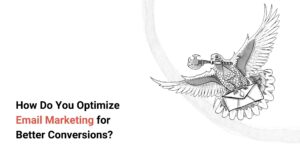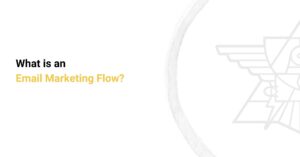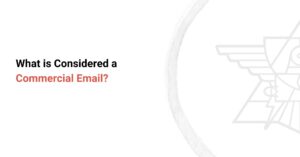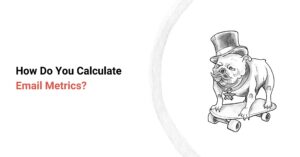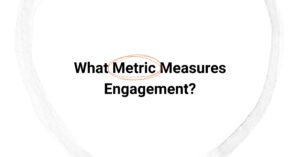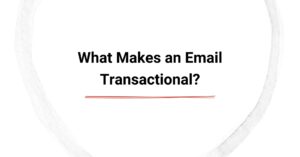Are you also one of the many beating themselves up to turn email subscribers into paying customers? Well pal, you’re definitely not alone. Many marketers launch email campaigns only to find that the results fall flat, meaning low click-throughs, fewer signups, and a disappointing return on investment. Such a bummer, we know. If any of these sounds familiar, it’s time to optimize email marketing for better conversions to effectively engage potential customers.
From segmenting your list and writing better subject lines to using A/B testing and automation, this guide breaks down what actually works when it comes to email marketing optimization. If you're looking to maximize your email performance and achieve better results, we’ve got practical strategies that are proven to increase engagement and drive revenue.
What Does Email Marketing Conversion Optimization Mean?
To optimize email marketing for better conversions, you need to improve the elements of your campaigns that influence user action—like clicks, signups, or purchases—aligned with your conversion goals. It’s about fine-tuning the entire customer journey within your emails.
Why does it matter? Because higher email conversion rates mean better returns from your email campaigns—without increasing your budget. That’s why optimization isn’t optional anymore. It’s a must.
Key Strategies to Optimize Email Marketing for Better Conversions
Segment Your Email List

Email list segmentation involves dividing your target audience into specific groups based on interests, behaviors, demographics, or purchase history. The more targeted your message, the more likely it is to resonate.
Example: Sending a product update to only users who’ve previously purchased a related item.
Tips:
- Create segments for new subscribers, loyal customers, cart abandoners, and inactive users.
- Use behavioral data to build smarter segments over time.
Personalize Your Email Content
Personalization goes beyond using someone’s first name. It’s about using data and delivering valuable content that shows your subscribers you understand their needs.
Example: “Hey Jake, we thought you might like these accessories for your new camera.”
Tips:
- Use personalized product recommendations.
- Trigger emails based on user actions (e.g., browsing a category).
Personalized emails increase relevance and trust, helping you optimize email marketing for better conversions.
Optimize Subject Lines and Preview Text
The subject line is your first impression. The preview text is your second. Get them right, and you’ll get the open.
Example: A/B test subject lines like “Your Weekly Deals Are In” vs. “Get 30% Off Your Favorites.”
Tips:
- Limit subject lines to 60 characters.
- Use preview text to create curiosity or summarize the offer.
- Test different formats (questions, emojis, urgency).
Strong email subject lines lead to more opens—and more opportunities to convert.
Use Strong and Clear CTAs (Calls to Action)
Your email CTAs should tell people exactly what to do next—and make it easy to do it.
Example: A bright button that says “Claim Your Discount Now.”
Tips:
- Use action-driven language: “Start Your Free Trial,” “Reserve Your Spot.”
- Place the CTA above the fold and repeat it at the bottom.
Clear CTAs eliminate confusion and guide readers toward conversion.
A/B Test Key Elements
Email A/B testing lets you compare different versions of your emails to see which one performs better.
Example: Test two variations of the same email with different headlines or images.
Tips:
- Test only one element at a time.
- Make sure your sample size is statistically significant.
A/B testing is essential to consistently optimize email marketing for better conversions.
Craft Compelling Email Copy
Your email copy should be clear, engaging, and designed to move the reader toward action.
Tips:
- Focus on benefits, not features.
- Use bullet points to improve readability.
- Write conversationally—avoid jargon.
Strong copy bridges the gap between interest and action.
Ensure Mobile Optimization
More than half of all emails are opened on mobile. If your design breaks on smaller screens, you lose conversions.
Tips:
- Use a single-column layout.
- Make buttons large and easy to tap.
- Use concise text and large fonts.
Mobile optimization is no longer optional—it’s essential.
Timing, Frequency, and Automation
Find the Right Send Time
Your send time can impact whether your email is read or ignored.
Tips:
- Test different days and times.
- Many brands see success Tuesday to Thursday around mid-morning.
- Analyze your data to find what works for your audience.
Balance Frequency
Over-emailing leads to unsubscribes. Under-emailing causes disengagement.
Tips:
- Use engagement data to adjust frequency.
- Offer subscribers control over how often they hear from you.
Automate Email Flows
Automation allows you to reach the right people at the right time without manual effort.
Examples:
- Welcome series for new subscribers
- Abandoned cart reminders
- Post-purchase follow-ups
Automation supports consistency and helps you optimize email marketing for better conversions at scale.
Track, Analyze, and Improve
Monitor Key Metrics
Focus on metrics like:
- Email open rate
- Click-through rate (CTR)
- Bounce rate
- Unsubscribe rate
- Conversion rate
Use tools like:
Email marketing optimization depends on tracking what works—and what doesn’t.
Identify and Fix Drop-Off Points
Where are readers losing interest?
Tips:
- Use heatmaps and click maps to see where users engage.
- Move CTAs higher up.
- Simplify layouts to reduce scroll fatigue.
Re-engage Inactive Subscribers
Win-back campaigns can reactivate cold leads.
Example: “We miss you! Here’s 20% off your next order.”
Tips:
- Offer incentives.
- Let subscribers update their preferences.
Common Challenges and Solutions in Email Conversion Optimization
Low Click-Through Rates
Problem: Weak CTA or too much content.
Solution: Use fewer elements, strong CTAs, and visual hierarchy.
High Bounce or Unsubscribe Rates
Problem: Poor list hygiene or irrelevant content leading to high bounce rates.
Solution: Clean your list regularly and improve email list segmentation.
Emails Landing in Spam
Problem: Spammy language or poor domain setup.
Solution: Authenticate your domain (SPF, DKIM, DMARC) and avoid misleading subject lines.
Conclusion
To truly optimize email marketing for better conversions, you need to take a strategic, data-driven approach. Start with the basics—segment your audience, personalize your content, and run email A/B testing regularly. From there, refine your email campaign strategy using strong CTAs, compelling subject lines, and automation.
Always monitor performance, fix weak points, and keep improving. With consistent effort and smart tools, you’ll see better email conversion rates and more value from every campaign.
Want to optimize your email marketing for better conversions? Book a strategy call with our team and start seeing results.


